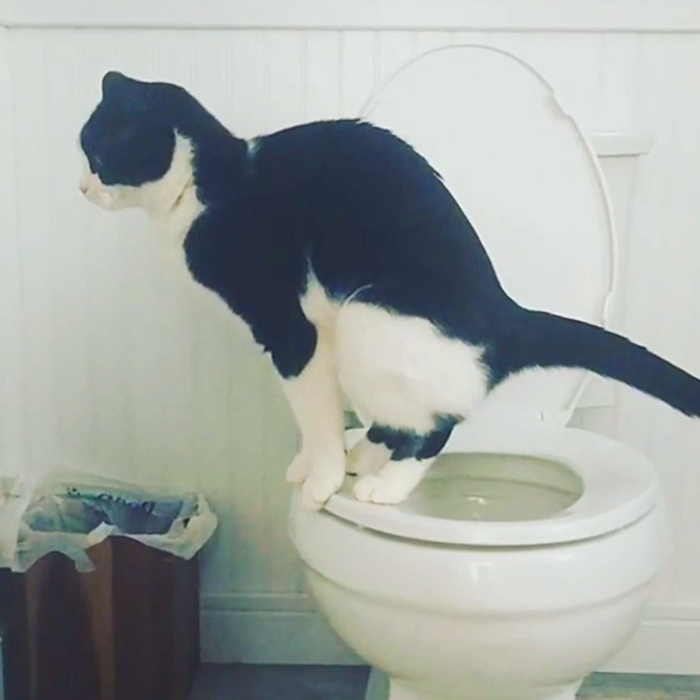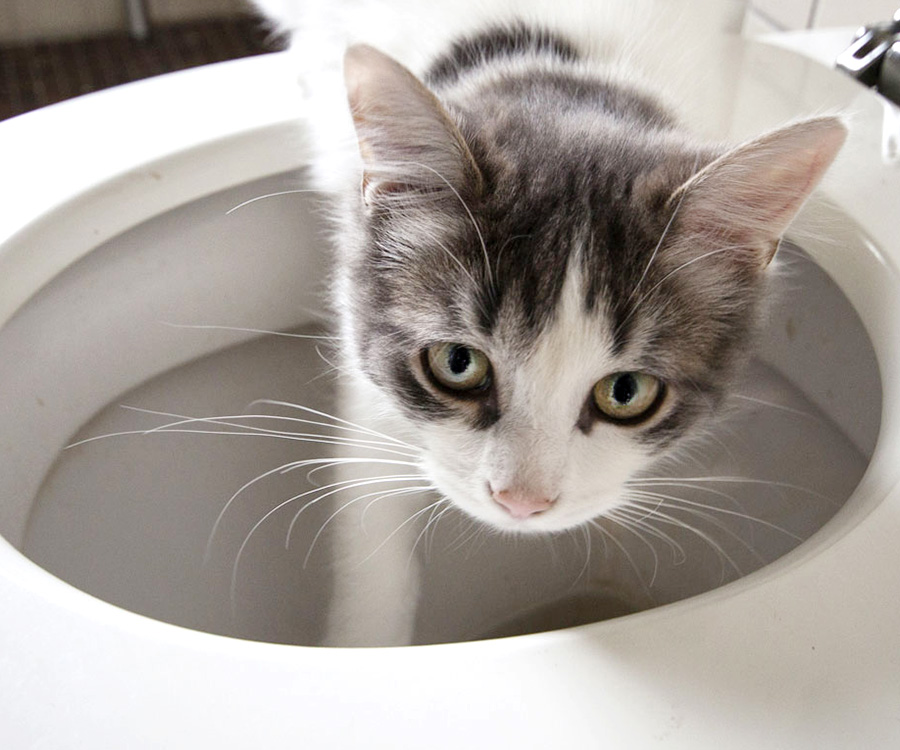When Flushing Animal Waste Down the Toilet Is Harmful
When Flushing Animal Waste Down the Toilet Is Harmful
Blog Article
Have you been interested in advise on Why you should never flush dog poop down the toilet?

When it pertains to taking care of waste, especially animal waste, many people often resort to the convenient alternative of flushing it down the commode. Nevertheless, this relatively very easy remedy can have severe consequences for the environment and public health. In this article, we'll explore why flushing pet waste down the commode is a negative concept and supply alternative methods for proper disposal.
Intro
Proper garbage disposal is vital for keeping environmental sustainability and public health. While it might seem harmless to purge animal waste down the bathroom, it can bring about different issues, both for the setting and human health.
Risks of flushing pet waste
Ecological influence
Flushing pet waste presents damaging germs and virus into waterways, which can adversely influence aquatic ecological communities. These virus can pollute water sources and damage marine life, interrupting delicate environments.
Public health issues
Pet waste includes damaging microorganisms such as E. coli and Salmonella, which can position severe health and wellness risks to human beings. Purging animal waste down the bathroom can contaminate water products, resulting in the spread of diseases and infections.
Alternatives to flushing
Instead of purging animal waste down the commode, there are numerous alternative disposal methods that are a lot more environmentally friendly and hygienic.
Composting
Composting pet waste is an eco-friendly way to get rid of it. By composting, raw material is broken down right into nutrient-rich dirt, which can be made use of to feed gardens and plants.
Landfill disposal
Disposing of pet waste in a landfill is one more choice. While not as eco-friendly as composting, it is a more secure alternative to flushing, as it prevents the contamination of water sources.
Family pet garbage disposal systems
There are customized pet dog garbage disposal systems offered that safely and hygienically throw away animal waste. These systems typically utilize enzymes to break down waste and get rid of odors.
Steps to proper pet garbage disposal
To make sure appropriate disposal of animal waste, adhere to these steps:
Scooping and bagging waste
Routinely scoop and bag animal waste using biodegradable bags. This protects against waste from polluting the atmosphere.
Using assigned waste containers
Dispose of bagged pet waste in assigned waste bins, such as compost containers or land fill bins. Prevent flushing it here down the bathroom at all costs.
Cleansing can and animal locations regularly
Frequently tidy litter boxes and pet locations to prevent the accumulation of waste and bacteria. Usage pet-safe cleaning items to maintain health.
Benefits of correct disposal techniques
Adopting appropriate disposal methods for pet waste offers a number of benefits:
Decreased environmental pollution
Appropriate disposal approaches decrease the danger of environmental pollution, safeguarding waterways and ecosystems from contamination
Reduced danger of water contamination.
By preventing flushing animal waste down the bathroom, the danger of water contamination is dramatically reduced, safeguarding public health.
Improved sanitation and hygiene
Proper disposal methods promote better sanitation and hygiene, creating a safer environment for both human beings and pets.
Verdict
To conclude, flushing animal waste down the commode is unsafe to the atmosphere and public health. By taking on alternative disposal approaches and complying with proper waste monitoring methods, we can minimize the adverse effect of pet waste and add to a cleaner, healthier world.
Why You Should Never Flush Cat Poop Down the Toilet
A rose by any other name might smell as sweet, but not all poop is created equal. Toilets, and our sewage systems, are designed for human excrement, not animal waste. It might seem like it couldn’t hurt to toss cat feces into the loo, but it’s not a good idea to flush cat poop in the toilet.
First and foremost, assuming your cat uses a litter box, any waste is going to have litter on it. And even the smallest amount of litter can wreak havoc on plumbing.
Over time, small amounts build up, filling up your septic system. Most litter sold today is clumping; it is made from a type of clay that hardens when it gets wet. Ever tried to scrape old clumps from the bottom of a litter box? You know just how cement-hard it can get!
Now imagine just a small clump of that stuck in your pipes. A simple de-clogger like Drano isn’t going to cut it. And that means it’s going to cost you big time to fix it.
For an amusing, graphic tale of what happens when you flush too much litter down the toilet all at once, take a few minutes to read Gene Weingarten’s 2017 Washington Post column “So that’s what happens when you flush cat litter down the toilet.”
Parasitic Contamination
Believe it or not, your healthy kitty may be harboring a nasty parasite. Only cats excrete Toxoplasma in their feces. Yet it rarely causes serious health issues in the cats that are infected. Most people will be fine too if infected. Only pregnant women and people with compromised immune systems are at risk. (If you’ve ever heard how women who are expecting are excused from litter cleaning duty, Toxoplasma is why.)
But other animals may have a problem if infected with the parasite. And human water treatment systems aren’t designed to handle it. As a result, the systems don’t remove the parasite before discharging wastewater into local waterways. Fish, shellfish, and other marine life — otters in particular — are susceptible to toxoplasma. If exposed, most will end up with brain damage and many will die.
Depending on the species of fish, they may end up on someone’s fish hook and, ultimately on someone’s dinner plate. If that someone has a chronic illness, they’re at risk.
Skip the Toilet Training
We know there are folks out there who like to toilet train their cats. And we give them props, it takes a lot of work. But thanks to the toxoplasma, it’s not a good idea.
Leave the toilet to the humans, and accept your future litter cleaning duty.

Frequently tidy litter boxes and pet locations to prevent the accumulation of waste and bacteria. Usage pet-safe cleaning items to maintain health.
Benefits of correct disposal techniques
Adopting appropriate disposal methods for pet waste offers a number of benefits:
Decreased environmental pollution
Appropriate disposal approaches decrease the danger of environmental pollution, safeguarding waterways and ecosystems from contamination
Reduced danger of water contamination.
By preventing flushing animal waste down the bathroom, the danger of water contamination is dramatically reduced, safeguarding public health.
Improved sanitation and hygiene
Proper disposal methods promote better sanitation and hygiene, creating a safer environment for both human beings and pets.
Verdict
To conclude, flushing animal waste down the commode is unsafe to the atmosphere and public health. By taking on alternative disposal approaches and complying with proper waste monitoring methods, we can minimize the adverse effect of pet waste and add to a cleaner, healthier world.
Why You Should Never Flush Cat Poop Down the Toilet
A rose by any other name might smell as sweet, but not all poop is created equal. Toilets, and our sewage systems, are designed for human excrement, not animal waste. It might seem like it couldn’t hurt to toss cat feces into the loo, but it’s not a good idea to flush cat poop in the toilet.
First and foremost, assuming your cat uses a litter box, any waste is going to have litter on it. And even the smallest amount of litter can wreak havoc on plumbing.
Over time, small amounts build up, filling up your septic system. Most litter sold today is clumping; it is made from a type of clay that hardens when it gets wet. Ever tried to scrape old clumps from the bottom of a litter box? You know just how cement-hard it can get!
Now imagine just a small clump of that stuck in your pipes. A simple de-clogger like Drano isn’t going to cut it. And that means it’s going to cost you big time to fix it.
For an amusing, graphic tale of what happens when you flush too much litter down the toilet all at once, take a few minutes to read Gene Weingarten’s 2017 Washington Post column “So that’s what happens when you flush cat litter down the toilet.”
Parasitic Contamination
Believe it or not, your healthy kitty may be harboring a nasty parasite. Only cats excrete Toxoplasma in their feces. Yet it rarely causes serious health issues in the cats that are infected. Most people will be fine too if infected. Only pregnant women and people with compromised immune systems are at risk. (If you’ve ever heard how women who are expecting are excused from litter cleaning duty, Toxoplasma is why.)
But other animals may have a problem if infected with the parasite. And human water treatment systems aren’t designed to handle it. As a result, the systems don’t remove the parasite before discharging wastewater into local waterways. Fish, shellfish, and other marine life — otters in particular — are susceptible to toxoplasma. If exposed, most will end up with brain damage and many will die.
Depending on the species of fish, they may end up on someone’s fish hook and, ultimately on someone’s dinner plate. If that someone has a chronic illness, they’re at risk.
Skip the Toilet Training
We know there are folks out there who like to toilet train their cats. And we give them props, it takes a lot of work. But thanks to the toxoplasma, it’s not a good idea.
Leave the toilet to the humans, and accept your future litter cleaning duty.

We are very taken with 4 Reasons Why Dog Poop Cleanup is Important and I'm hoping you enjoyed the post. Enjoyed reading our posting? Please quickly share it. Let another person find it. Kudos for your time. Kindly check our site back soon.
Visit The Following Page Report this page